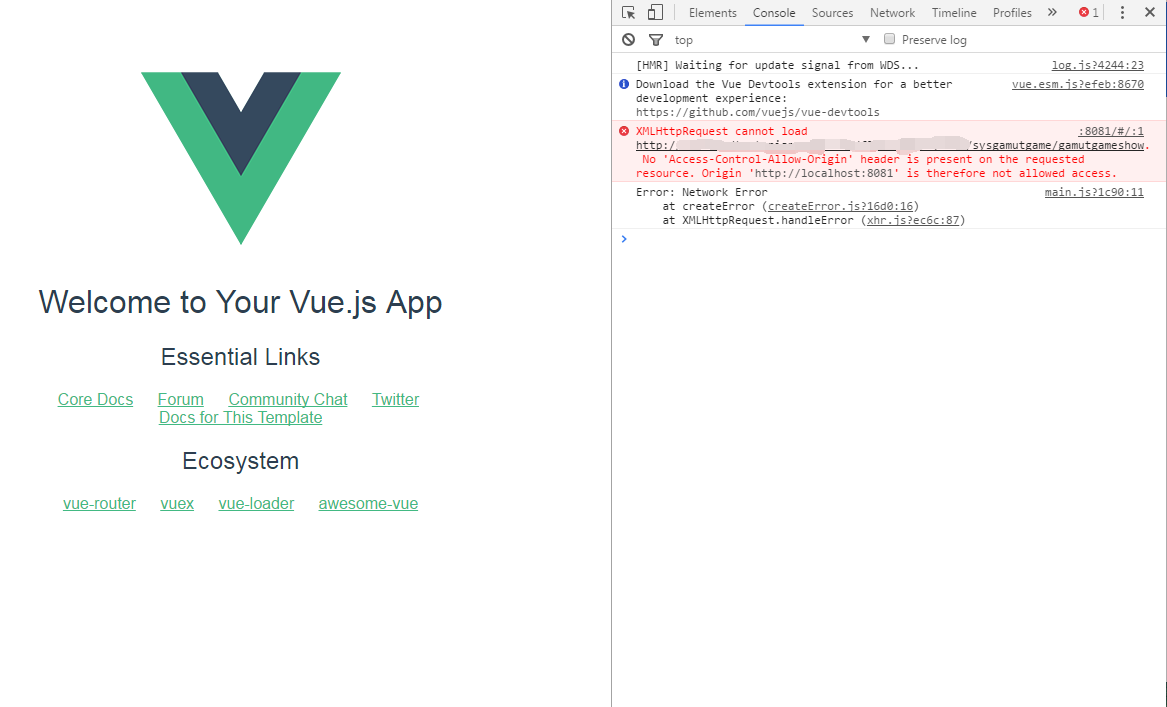

- #PREFLIGHT MISSING ALLOW ORIGIN HEADER AXIOS HOW TO#
- #PREFLIGHT MISSING ALLOW ORIGIN HEADER AXIOS ARCHIVE#
It also configures the OPTIONS method's 200 response with the required Access-Control-Allow-* headers. Note: Configuring CORS in the API Gateway console adds an OPTIONS method to the resource if one doesn’t already exist. Also, choose the check boxes for all of the other methods that are available to CORS requests. For Methods, choose the check box for the OPTIONS method, if it isn't already selected.For example, if a request includes an incorrect resource path, API Gateway still responds with a 403 "Missing Authentication Token" error. Note: When you select these default options, API Gateway responds with the required CORS headers, even when a request doesn't reach the endpoint.

#PREFLIGHT MISSING ALLOW ORIGIN HEADER AXIOS ARCHIVE#
#PREFLIGHT MISSING ALLOW ORIGIN HEADER AXIOS HOW TO#
The following example procedure shows how to troubleshoot the No ‘Access-Control-Allow-Origin’ header present CORS error. Note: CORS must be configured at the resource level and can be handled using API Gateway configurations or backend integrations, such as AWS Lambda.

For HTTP APIs, see Configuring CORS for an HTTP API. To resolve a CORS error from an API Gateway REST API or HTTP API, you must reconfigure the API to meet the CORS standard.įor more information on configuring CORS for REST APIs, see Turning on CORS for a REST API resource.

Typically, you should place these kinds of routes outside of the web middleware group that the App\Providers\RouteServiceProvider applies to all routes in the routes/web.php file.Cross-Origin Resource Sharing (CORS) errors occur when a server doesn’t return the HTTP headers required by the CORS standard. For example, if you are using Stripe to process payments and are utilizing their webhook system, you will need to exclude your Stripe webhook handler route from CSRF protection since Stripe will not know what CSRF token to send to your routes. Sometimes you may wish to exclude a set of URIs from CSRF protection. If you are building a SPA that is utilizing Laravel as an API backend, you should consult the Laravel Sanctum documentation for information on authenticating with your API and protecting against CSRF vulnerabilities. When these two tokens match, we know that the authenticated user is the one initiating the request. The App\Http\Middleware\Verif圜srfToken middleware, which is included in the web middleware group by default, will automatically verify that the token in the request input matches the token stored in the session.


 0 kommentar(er)
0 kommentar(er)
